Holly
Ilex cornuta
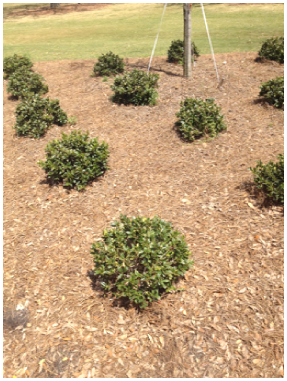
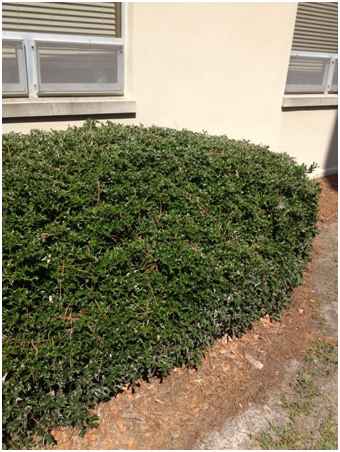
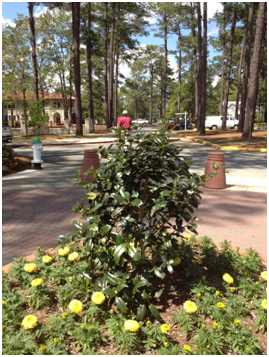
[Varieties from left to right: Carissa, Chinese, Robin]
(Photos by Bucky Shiver)
View the Location on Campus
Taxonomy (1,2)
Classification: Angiosperm, dicot
Family: Aquifoliaceae
Common name: Carissa Holly (Carissa), Chinese Holly (Chinese), Robin Holly (hybrid)
Varieties on campus: Carissa, Chinese, Chinese holly/English holly hybrid
General Information (1,2,3)
Region of Origin: Eastern Asia (Carissa and Chinese), hybrid between English holly and Chinese holly (Robin)
USDA Plants Hardiness Zones: 7-9 (Carissa and Chinese), 6-9 (Robin)
Growth Habit: Shrub
- Size: 8-25 feet (Carissa and Chinese), 15-20 feet (Robin)
- Deciduous/Evergreen: Evergreen
- Flowering: late March to early April
Diagnostic Characteristics
Leaves (1,2,3)
- Arrangement: Alternate
- Simple/Compound: Simple
- Shape: Ovate (Carissa)
- Size: 2-4 inches (Carissa); 3-5 inches (Chinese and Robin)
- Other: Leathery; 5-7 spikes (Chinese); 7-9 spikes (Robin); new spring growth is red (Robin)
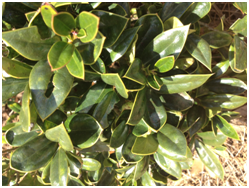
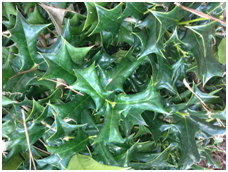
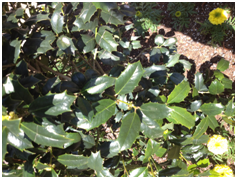
[Varieties from left to right: Carissa, Chinese, Robin]
(Photos by Bucky Shiver)
Stem/Bark (1,2,3)
- Color: Gray
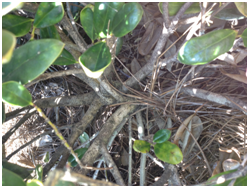
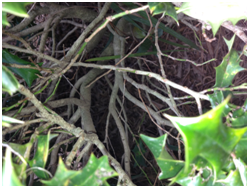
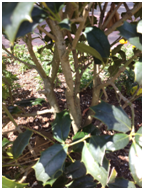
[Varieties from left to right: Carissa, Chinese, Robin]
(Photos by Bucky Shiver)
Flower (1,2)
- Perfect/Imperfect: Imperfect
- Color: White (Carissa and Robin); Yellow (Chinese)
- Size: 1/4-1/3 inch

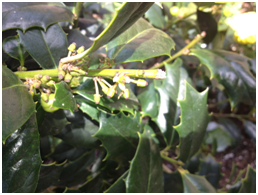
[Varieties from left to right: Carissa, Robin]
(Photos by Bucky Shiver)
Fruit (1)
- Size: 1/4-1/3 inch
- Color: Red
Horticultural Information (1,2,3)
- Light: Full sun-part shade (Carissa and Chinese), Full sun (Robin)
- pH: Slightly alkaline
- Maintenance: Easy to care for (Robin)
- Landscape Uses: Home foundation (Carissa and Chinese), privacy screen (Robin)
- Other: Heat and drought tolerant (Chinese and Carissa)
Interesting Facts (1)
- Displays tremendous heat tolerance, surviving worst drought in US history (Carissa and Chinese)
- Good parental species for transferring heat tolerance to progeny (Carissa and Chinese)
References
1) Dirr, Michael A. (1990). Manual of woody landscape plants. Champaign, Illinois. Stipes publishing company.
2) monrovia.com (2013) Retrieved 4/2/13 from http://www.monrovia.com/
3) Southernlivingplants.com (2009). Retrieved 4/2/13 from http://southernlivingplants.com/expert_advice/guide/striking_foliage_colorful_combinations
Edited by Jessica Bartek
Department of Biology
-
Room 2035, 2nd Floor
Bailey Science Building -
Mailing Address
1500 N. Patterson St.
Valdosta, GA 31698 - Phone: 229.333.5759
- Fax: 229.245.6585
Monday - Thursday
8:00AM until 5:30PM
Friday
8:00AM until 3:00PM
Saturday - Sunday
Office Closed